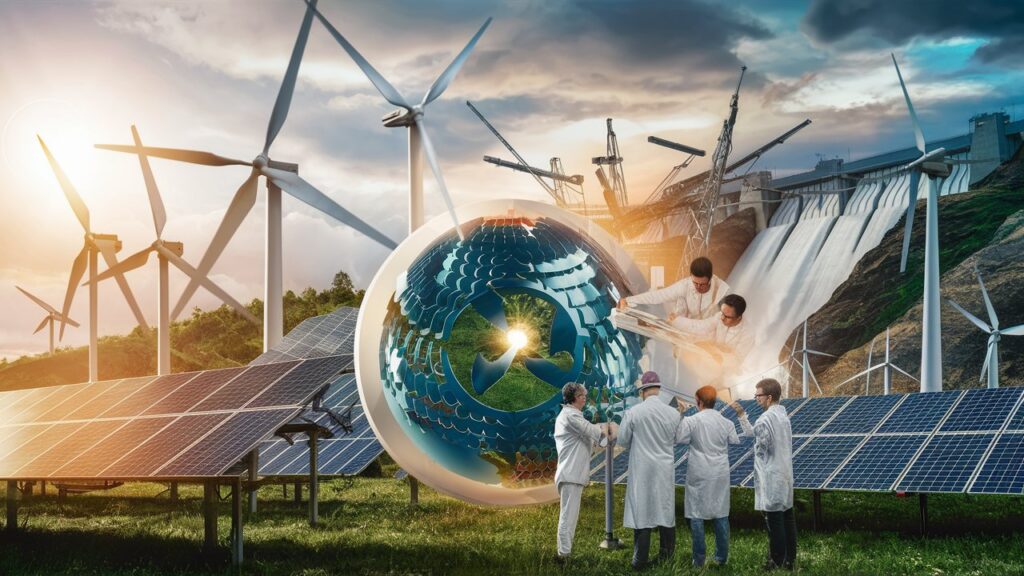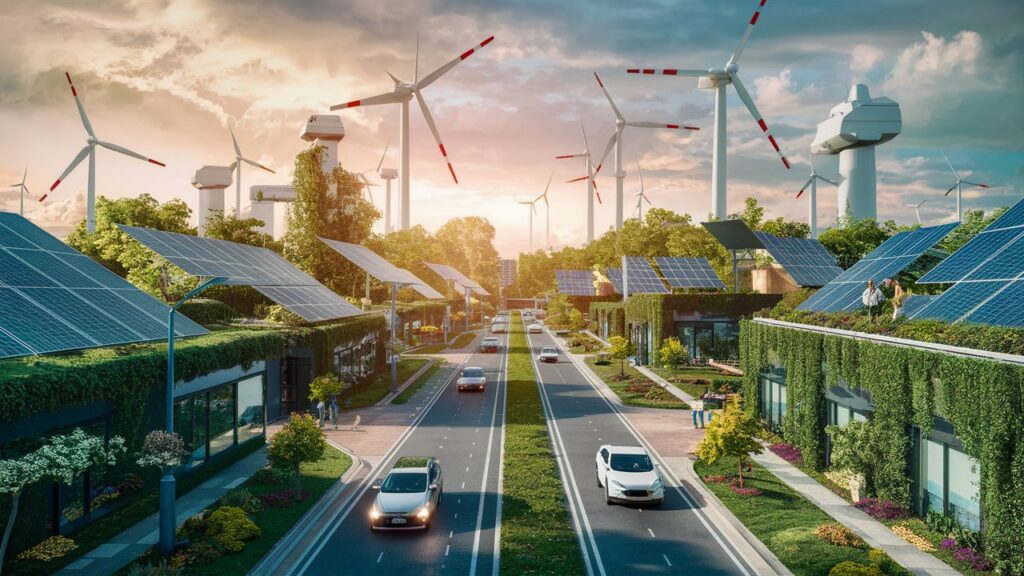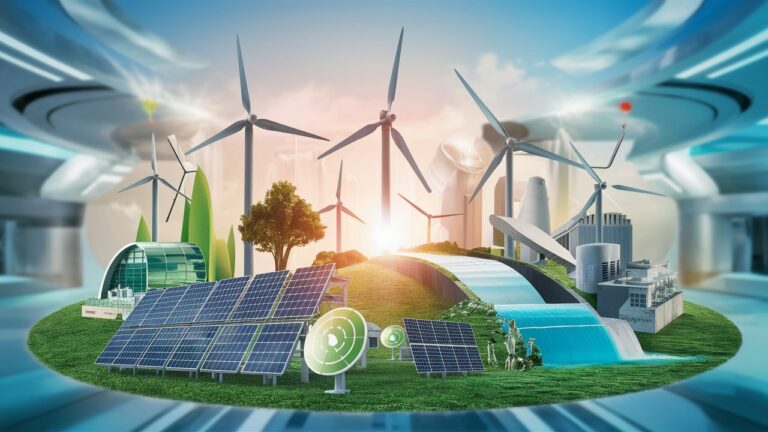Introduction
The global shift toward sustainable energy solutions is no longer a choice but a necessity. As climate change accelerates and fossil fuel reserves dwindle, nations, corporations, and individuals are reimagining how energy is produced, stored, and consumed. This article explores the cutting-edge technologies and strategies driving the renewable energy revolution, emphasizing their environmental, economic, and societal impacts. From solar and wind power to groundbreaking energy storage systems, we delve into the innovations reshaping our world—and the challenges that remain.
The Rise of Renewable Energy
Renewable energy has transitioned from a niche concept to a cornerstone of global energy policy. Solar, wind, hydropower, and geothermal resources now account for over 30% of global electricity generation, a figure projected to double by 2050. Governments are investing heavily in renewable infrastructure, driven by international agreements like the Paris Accord and public demand for cleaner energy. This shift isn’t just about reducing carbon emissions; it’s about creating resilient energy grids, generating jobs, and democratizing access to power in underserved regions. However, scaling these technologies requires overcoming logistical hurdles, such as land use conflicts and intermittent energy supply, which we’ll explore in later sections.
Solar Power: Capturing the Sun’s Potential
Solar energy stands at the forefront of the renewable revolution. Photovoltaic (PV) panels and concentrated solar power (CSP) systems are becoming more efficient and affordable, with solar farms now powering entire cities. Innovations like bifacial panels (which capture sunlight on both sides) and perovskite solar cells promise to boost efficiency further. Beyond large-scale installations, decentralized solar systems are empowering rural communities, reducing reliance on fossil fuels, and enabling energy independence. Yet challenges persist, including the environmental impact of panel manufacturing and the need for reliable storage solutions to address solar’s variability during cloudy days or nighttime.
Wind Energy: Harnessing the Power of the Air
Wind energy has evolved from traditional windmills to towering offshore turbines capable of powering thousands of homes. Offshore wind farms, in particular, are gaining traction due to stronger, more consistent winds at sea and reduced land-use conflicts. Advances in turbine design—such as floating turbines and modular blades—are making wind energy viable in previously inaccessible regions. Despite its promise, wind power faces criticism for its impact on wildlife, particularly birds and marine ecosystems, and the visual and noise pollution concerns raised by local communities. Addressing these issues requires smarter siting, improved technology, and community engagement.

Hydropower and Geothermal Energy: Tapping Earth’s Natural Forces
Hydropower remains the largest source of renewable electricity globally, leveraging rivers and dams to generate steady, predictable energy. Modern innovations include small-scale hydro systems and pumped-storage hydropower, which acts as a “battery” by storing excess energy. Meanwhile, geothermal energy, which harnesses heat from the Earth’s core, is gaining attention for its reliability and low carbon footprint. Enhanced geothermal systems (EGS) are expanding its reach beyond volcanic regions, offering 24/7 power generation. However, both technologies face geographical limitations and environmental trade-offs, such as habitat disruption and seismic risks in geothermal projects.
Energy Storage: The Key to a Renewable Future
The intermittent nature of renewables underscores the critical role of energy storage. Lithium-ion batteries dominate the market, but emerging solutions like solid-state batteries, flow batteries, and hydrogen storage are pushing the boundaries of capacity and longevity. Pumped hydro and compressed air energy storage (CAES) provide large-scale solutions, while vehicle-to-grid (V2G) technology turns electric cars into mobile power sources. Storage not only stabilizes grids but also enables energy sharing between regions, fostering a more interconnected and flexible energy ecosystem.
Challenges and Roadblocks to Adoption
While the benefits of sustainable energy are clear, widespread adoption faces obstacles. High upfront costs, regulatory fragmentation, and resistance from fossil fuel industries slow progress. Additionally, transitioning workforces and recycling old infrastructure (e.g., solar panels, turbine blades) pose logistical and ethical dilemmas. Policymakers must prioritize subsidies, R&D funding, and international collaboration to create equitable frameworks that balance economic growth with environmental stewardship.

Conclusion
The transition to sustainable energy is a complex yet transformative journey. By embracing innovation, fostering global cooperation, and addressing systemic barriers, humanity can build a future where clean energy powers every home, business, and industry. This vision requires not just technological prowess but a collective commitment to equity and sustainability. As individuals, supporting renewable initiatives—whether through advocacy, investment, or lifestyle changes—can accelerate this critical shift.
Frequently Asked Questions (FAQs)
- What is the most efficient renewable energy source?
Efficiency varies by location and technology. Solar excels in sunny regions, while wind thrives in coastal areas. Geothermal offers consistent output but is geographically limited. - How can individuals contribute to sustainable energy adoption?
Installing rooftop solar panels, reducing energy consumption, supporting green policies, and investing in renewable energy stocks or community projects are impactful steps. - Are renewables truly cheaper than fossil fuels?
Over their lifespan, renewables often have lower operational costs. However, initial installation and storage expenses remain hurdles, though prices are falling rapidly. - What happens to old solar panels and wind turbines?
Recycling programs are emerging, but scalability is a challenge. Researchers are developing methods to reclaim materials like silicon and rare-earth metals. - Can renewables fully replace fossil fuels?
While 100% renewable grids are technically feasible, achieving this requires advancements in storage, grid infrastructure, and global policy alignment.
This comprehensive guide underscores the urgency and opportunity of sustainable energy solutions. By understanding the technologies, challenges, and collective actions needed, we can pave the way for a healthier planet.
